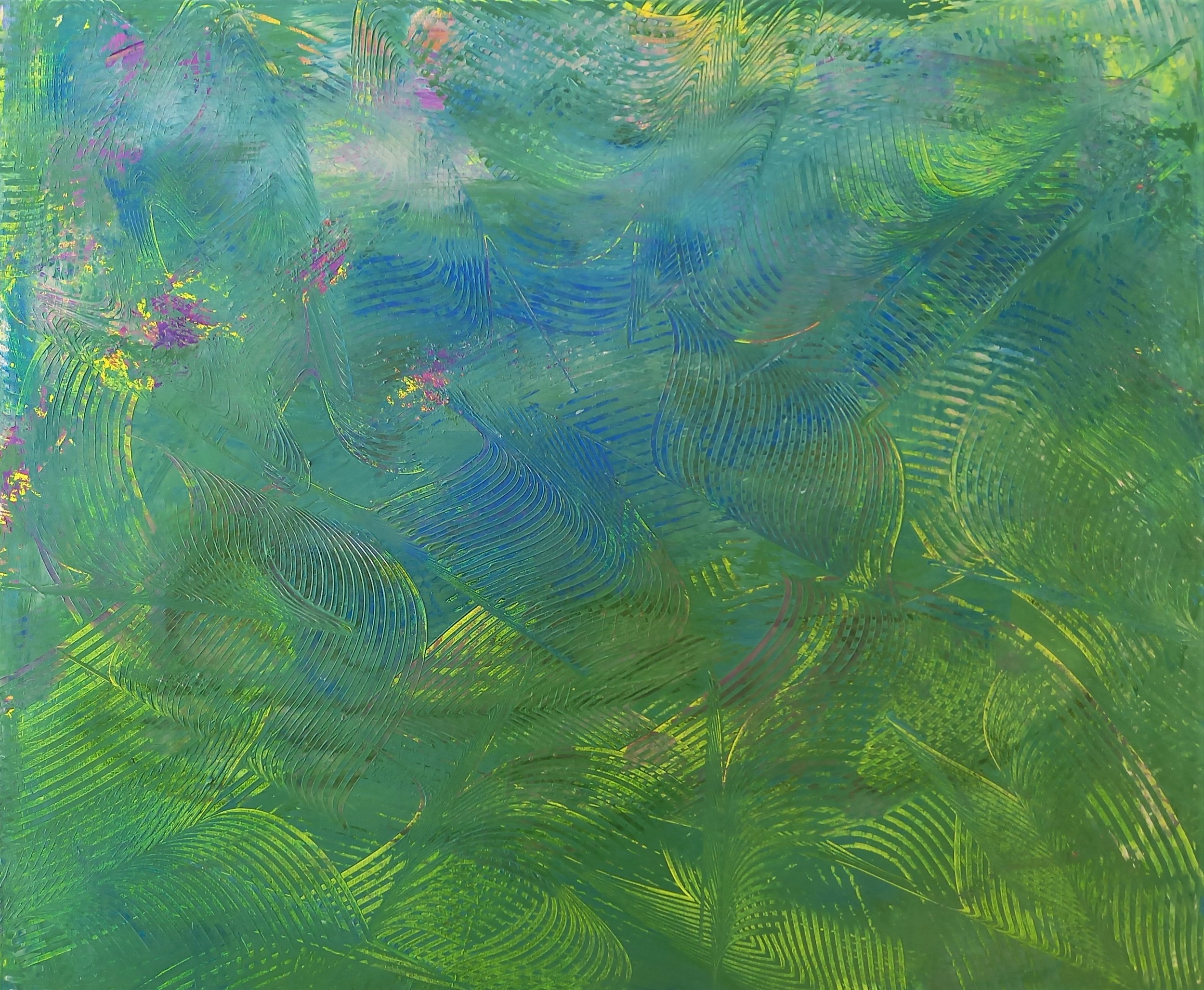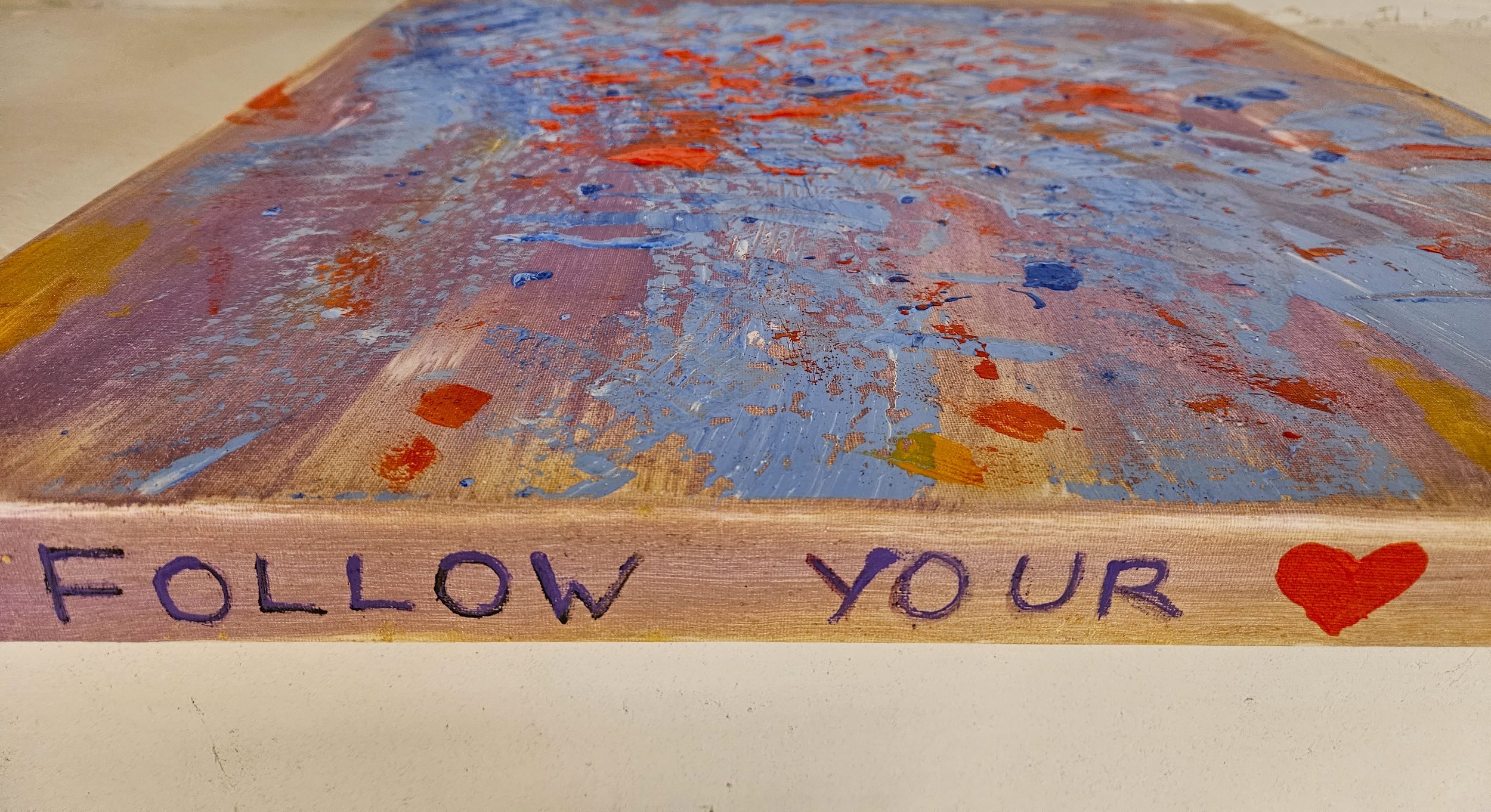Interview with Christine Rechnitzer
Christine Rechnitzer is an award winning contemporary visual artist of figurative and abstract art.
She graduated from Fashion School and was invited by
Friedensreich Hundertwasser to join his masterclass at the Academy of Fine Arts in Vienna. After a successful career in the pharmaceutical industry and in international retail, the lockdown phases led her back to creative work and she became what she is: a visual artist.
She is also a certified art therapist and conducts CreARTivity Workshops where students can discover, rediscover and develop their creative potential.
Christine lives and paints in Burgenland, Austria
Exhibitions throughout Europe, USA and Southhmerica. She was recently awarded with the Womens Essence Award 2024.
As a child, you enjoyed sharing your art clipped to a clothesline in your garage. How do you think these early experiences influenced your artistic journey?
As children we have an open heart and are basically pure souls. Throughout life we move away from this state and society has most of us conditioned until we might find ourselves living a life in roles, where uncaused joy becomes rare. Where we have moved away from us to a point of being unrecognizable to ourselves.
Finding myself in such a state, I remembered how it was like being a child. And I not only have remembered it but also have started to feel it; The liveliness, the wildness, the invincibility and the overwhelming joy I felt back then, when I was clipping my drawings to that clothesline in our garage. I am deeply thankful for having had loving parents who let me be me when I was a child.
Today when the monkey talk in my head is getting too much, when creativity is surpassed by reason I take myself back to my childhood and creativity gets back in flow again.
I like to share a quote by Pablo Picasso that might answer your question best: "As a child everyone is an artist, the difficulty lies in remaining one as an adult."
You mention using unconventional materials like coffee, salt, silk, and nail polish in your artworks. Can you share how you came to experiment with these materials and how they contribute to your creative process?
Creativity has been a lifelong companion in one way or another. In fashion school it was the designing and making of tailored clothes, later in management and team performance management it was more about finding creative approaches and developing high performing teams.
With painting the creative process is the same except for the tools. They are different.
This is how I started to use coffee and nail polish:
When I started to experiment with textures, structures and reliefs in my artworks I started using coffee. The idea came to me while brewing coffee in my Bialetti. Just like that.
Ever since painting has become my main focus my hands became witness to it, covered by many layers of acrylics, binders, glue and much more. As a consequence of that the nail polish I was using on my nails was basically ruined. Thus the question, what to do with all the little bottles of nail polish?
And while working on the Butterflies Series the idea came along to use them in these paintings. Adding nail polish to my paintings is just like adding some glamour to them.
Your work includes both figurative and abstract pieces. How do you decide which approach to take for a new piece, and what challenges do each of these styles present?
Whether I do an abstract or figurative piece is really depending on my mood.
Some themes define the style eg. faces and portraits are always rather figurative. Especially with portraits I am currently working on developing a different, more contemporary interpretation, eg. Maximizing Dior
With figurative and neo-figurative paintings there is a basic plan of what I want to create. But still not every detail is planned. I go with the flow, being curious where the process is taking me.
With abstract painting it is a slightly different story: usually I do not know where the process of creation is taking me. Being spontaneous and impulsive is my lead here.
I dedicate myself fully to the creative force within me and I immerse myself into a state without time and space, being fully absorbed by this force. It is joy and fun but also exhausting work, but in a good way. Because I have created something with my whole creative being. It is quite a liberating and elevating process.
I work on several paintings at the same time.
The current challenge in both and perhaps slightly more so in abstracts is being able to have my full dedication to the process until to the point that I am content with the result.
After a successful career in other fields, what motivated your return to visual arts during the 2020 lockdown, and how has this transition impacted your life and work?
During the lockdown phases I had for the first time in a long time, time on my hands and nowhere to go, but inside of myself. During this introspective and quiet time I one day went down to the basement, took out my acrylics and started to paint and I continued and did not want to nor could I stop. I felt whole and happy.
Just the way I was feeling in Fashion School or when attending the masterclass of Friedensreich Hunderwasser. It seems some innate creative source has been awakened during this quiet time in a way that took me beyond space and time and I finally became what I am: a visual artist. This outing has impacted my life in every area on every level. It has shifted my perception, my priorities, my goals, my approaches. This process of becoming is just like an ongoing catharsis, a rebirth.
I felt such gratitude and excitement when I was preparing my first exhibition in Vienna, Austria; Germany, Switzerland, Italy, Spain, The Netherlands, Argentina and USA followed. In fact I still feel gratitude and excitement every time I prepare for an exhibition.
As an artist with a notable presence in the art community, could you share your experiences and insights about being featured in various art books and magazines? How do these publications contribute to your artistic journey and visibility in the art world?
Being published is next to being exhibited a stepstone in anyone's artistic journey. It is also time consuming and admittedly I sometimes find myself wondering whether promotion activities are taking me away from the actual creative work. In fact they never are, at least not in the long term. On the contrary.
As a visual artist and creative being I have something to say and I want to share something with and express to a greater audience. That is why it is tremendously important to have a published presence, of being seen and overall being given the opportunity to get the message out. At this point I want to thank the people at the Contemporary Art Curator Magazine for giving me this opportunity!
You aim to please the viewer with your art. How do you gauge the audience's reaction to your work, and how does this feedback influence your future creations?
Pleasing the viewer to me is referring to the emotions and vibes the viewer is experiencing when getting in visual contact with my artworks. The aim is therefore to uplift the viewer and perhaps even broaden their perception of life in a way that reinforces the connection to his or her source within, to reignite the innate trust and as a consequence to open hearts and minds. Sometimes it happens through the actual artwork and other times the title of an artwork does the job, eg. "Follow your heart". When the viewer leaves the superficial contemplation of an artwork and opens up to the essence of an artwork a precious communication between the viewer and the artist can be established. A feedback emerged from this realm of contemplation is the most rewarding one for me as an artist. And it is then that I have fulfilled my purpose of being a visual artist.
This is the maxim of my present and will be of my future artistic work.
Given your diverse career path and return to art, what advice would you offer to individuals who are contemplating a shift towards pursuing their artistic passions later in life?
This is a tough one to answer, because I believe a one-for-all recipe does not exist. However I believe that feeling joy, being focused and consistent is paramount for being successful in any endeavor. If you decide to jump right onto an artistic path, be sure you have a safe place to land. An option might be to start by having a partime job which pays the canvas and the rent.
Financial constraints are never good companions and they might have a detrimental effect on developing your creative potential. When your artistic career is taking off you can make adjustments accordingly.
After all life is a dance, dance it your way and even if you stumble or fall, that might just be part of the dance.

















